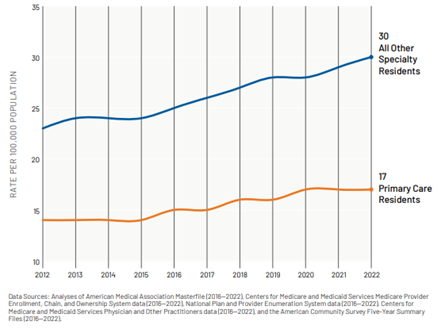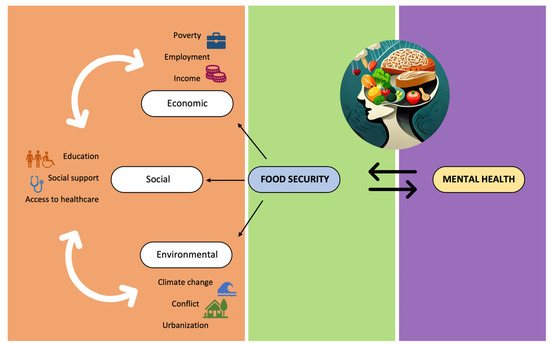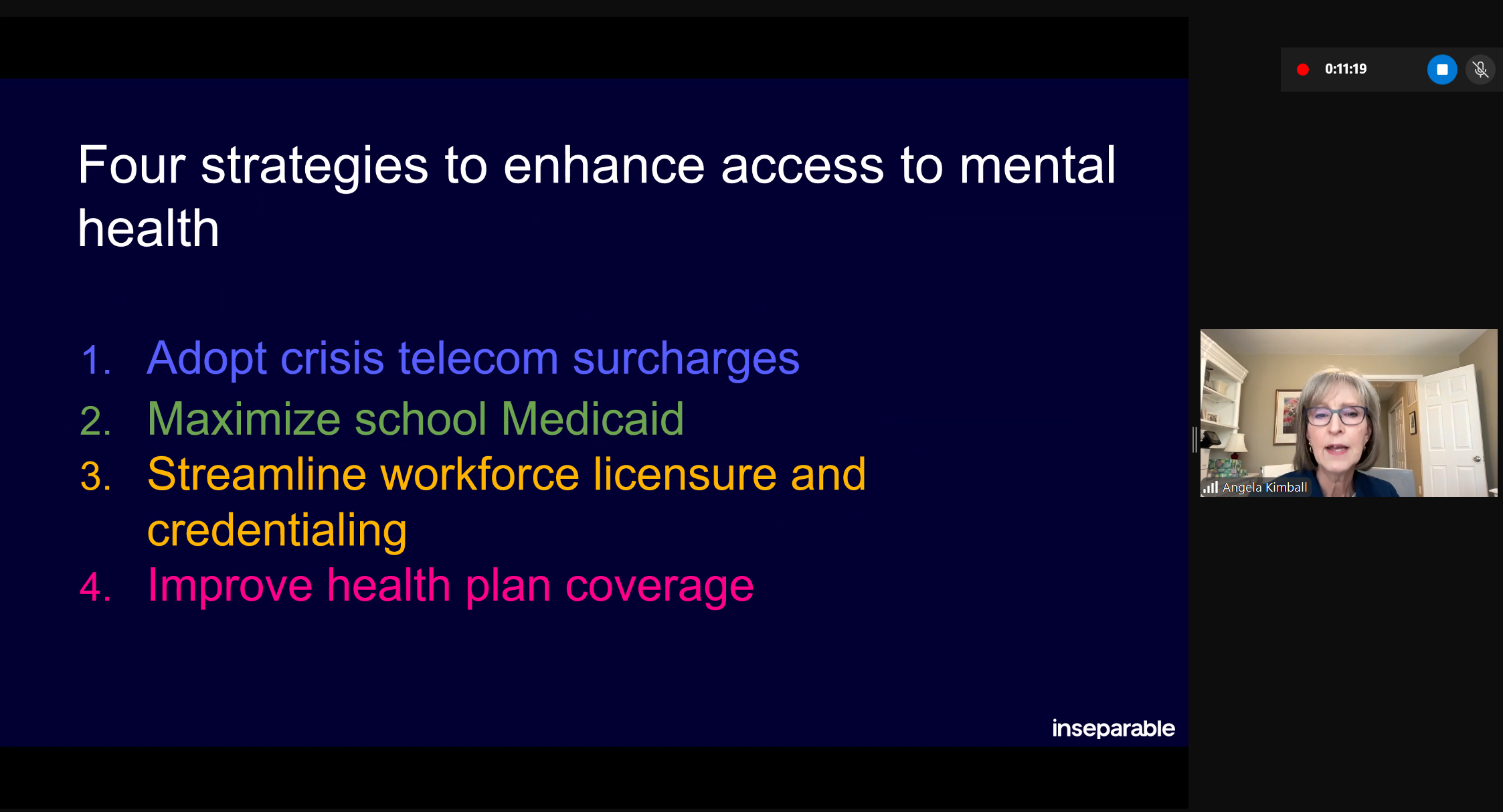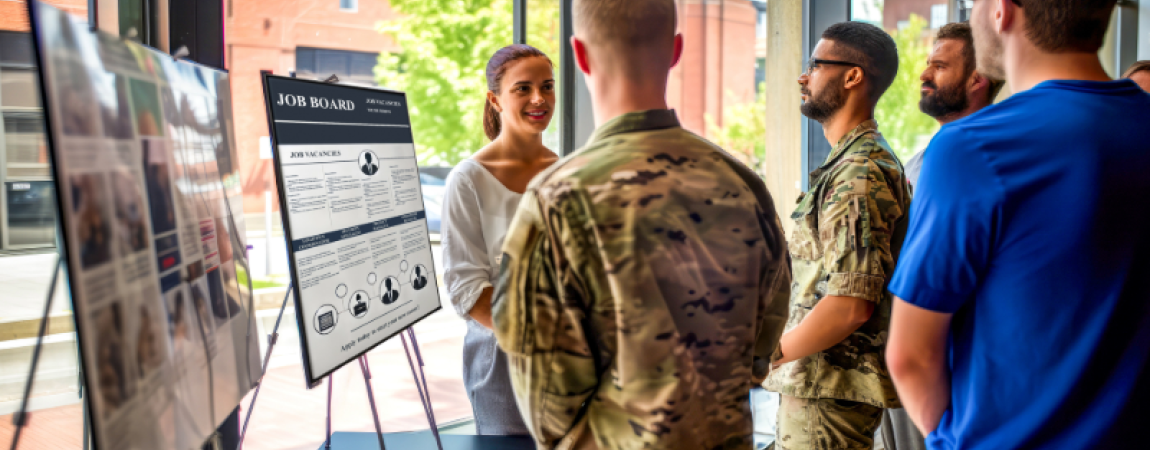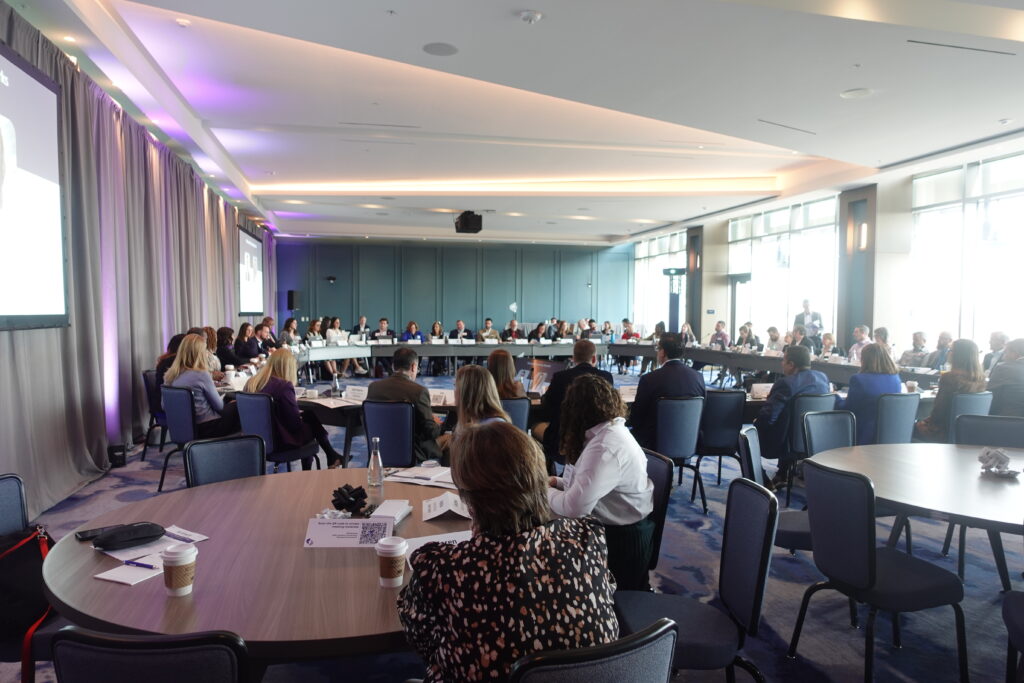
The first session on the first day of the 2025 Winter Workforce Development Policy Institute, held March 12–14 in Washington, D.C., presented a perfect encapsulation of why workforce development remains a top priority for Governors. During a roundtable discussion of recent successes and challenges, it was made clear that workforce development programs are critical for individuals and communities. The rapid pace of technological change has dramatically changed the way existing enterprises function and allowed new industries to emerge. By aligning training offerings with industry needs, workforce development programs allow individuals to gain new skills and update existing ones to remain competitive in an ever changing job market.
If kids aren’t leaving high school college ready or career ready, we haven’t done our job. I want to sign a bill that creates more internships and apprenticeships. If we can get this right, we’ll lead the nation in workforce development. Companies from all around the world will move operations to Oklahoma because it’ll be clear that we have the strongest workforce anywhere. So I’m calling on businesses, schools, and universities to create 250 new apprenticeship and internship programs this year.
Governor Kevin Stitt – 2025 State of the State Address
Wednesday, March 12
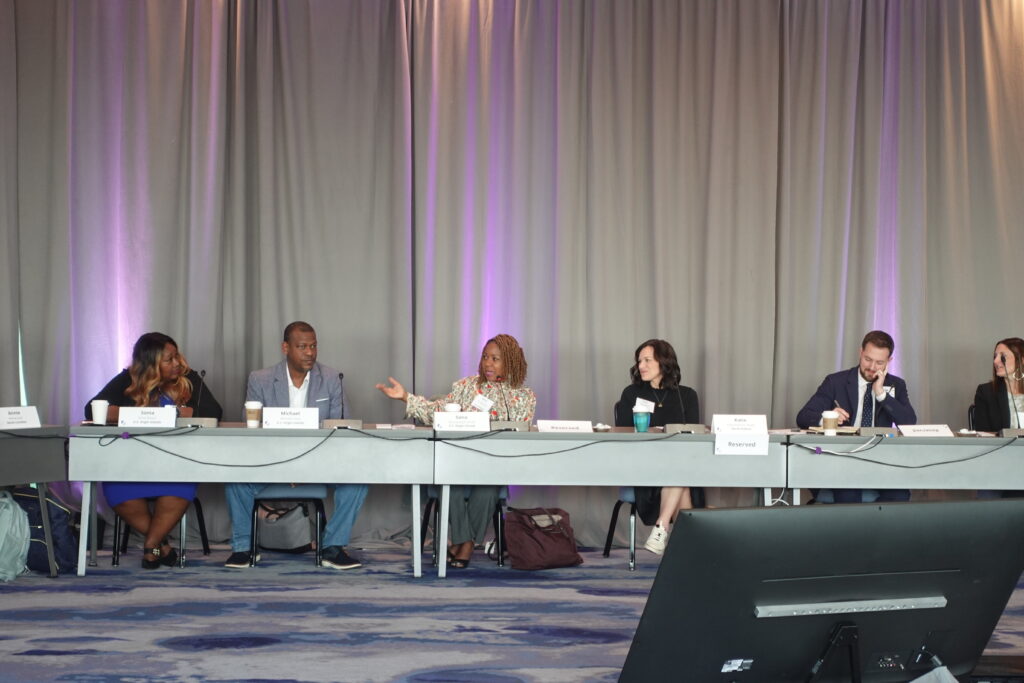
The forementioned insights were highlighted during a lengthy rapid-fire roundtable discussion held with Governors’ Workforce Development Policy Advisors and the National Association of State Liaisons for Workforce Development Partnerships. After the discussion attendees discussed how state workforce systems prepare and execute a response to natural disasters, to ensure employers are able to keep their doors open and workers are able to provide for their families. This session was moderated by Phil Nichols, Senior Policy Analyst, NGA Center for Best Practices with panelists Lisa Amaya, President, National Emergency Management and Response; Austin Lewis, Policy Advisor, Office of Louisiana Governor Jeff Landry; and Sana Joseph Smith, Policy Advisor, Office of U.S. Virgin Islands Governor Albert Bryan.
Attendees then discussed how to advance strategic programs without federal pandemic funds with panelists: Carlos Contreras, Director, Arizona Office of Economic Opportunity; Brianna McCain, Vice President, JPMorgan Chase PolicyCenter; and Nicole Overley, Commissioner, Virginia Works in a session moderated by Ryan Martin, Deputy Director, NGA Center for Best Practices.
“Workforce development has been, and will continue to be, one of this administration’s core priorities—because we know that empowering Virgin Islanders to build a brighter future starts with education, training, and skill-building.”
Governor Albert Bryan – 2025 State of the Territory Address
Thursday, March 13
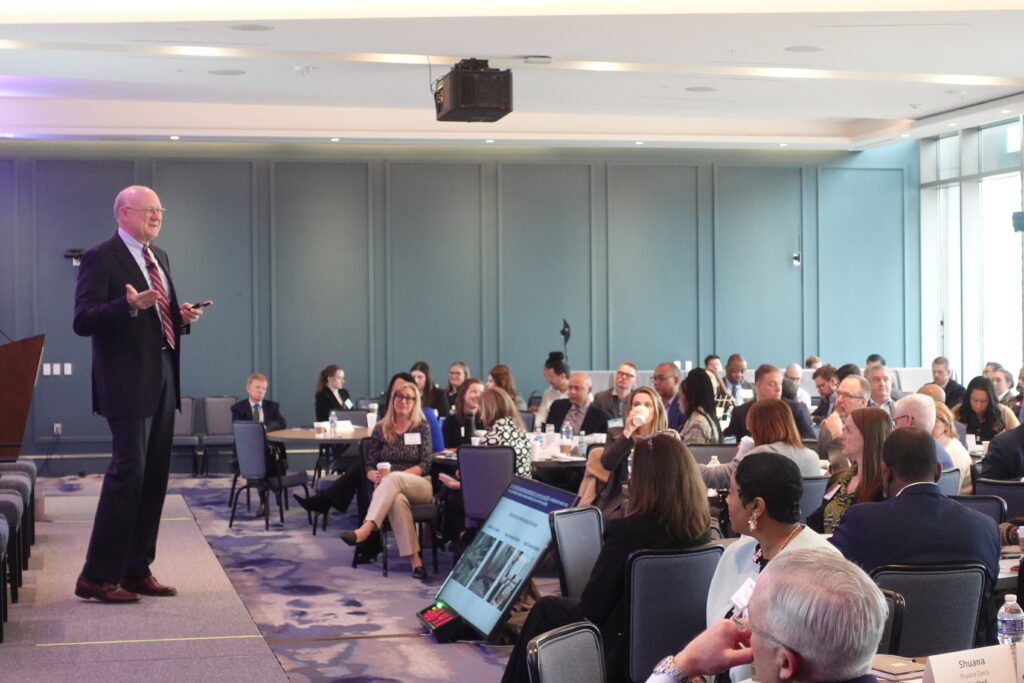
Private sector leaders joined the Institute on day two for a robust program with Bill McBride, Executive Director, National Governors Association and Jack Porter, Program Director, Workforce Development & Economic Policy, NGA Center for Best Practices providing opening remarks and an update on NGA’s workforce development policy portfolio. Attendees then received an overview of national economic trends and the resultant impact on workforce development from Dr. Robert Wescott, President and Founder, Keybridge. Following these remarks two sessions were held on Equipping Workers with the Tools Required for an AI-Powered Economy and Strengthening Military and Civilian Career Paths for Veterans and Military Families.
Equipping Workers with the Tools Required for an AI-Powered Economy
This session explored what Governors have done to make AI training accessible to workers, including those within state government; areas where technology can enhance public sector systems; and early outcomes of AI task forces established by Executive Order. It featured Allyson Knox, Senior Director of Education and Workforce Policy, Microsoft, and Secretary Amy Pechacek, Wisconsin Department of Workforce Development in a discussion moderated by Timothy Blute, Director, NGA Center for Best Practices.
Secretary Pechacek kicked the discussion off with an overview of work taking place in Wisconsin, highlighting Governor Tony Evers’ Task Force on Workforce and Artificial Intelligence, which aims to connect more workers with AI skills, boost the competitive advantage of Wisconsin employers and advance economic opportunity through a series of strategic principles and policies. Throughout the discussion, Secretary Pechacek emphasized the importance of ensuring that everyone in Wisconsin, especially young people, has access to the resources and skills-training needed to succeed in the tech-driven workforce.
Allyson Knox reiterated the Secretary’s stance on upskilling today’s students with the technology skills they will need to be successful in the modern workforce, emphasizing the importance of strengthening AI literacy for both students and teachers. She also stressed the importance of finding a common definition of AI literacy across the country, noting that the 13 Executive Orders issued by Governors so far all have different definitions.
Key points from the discussion included:
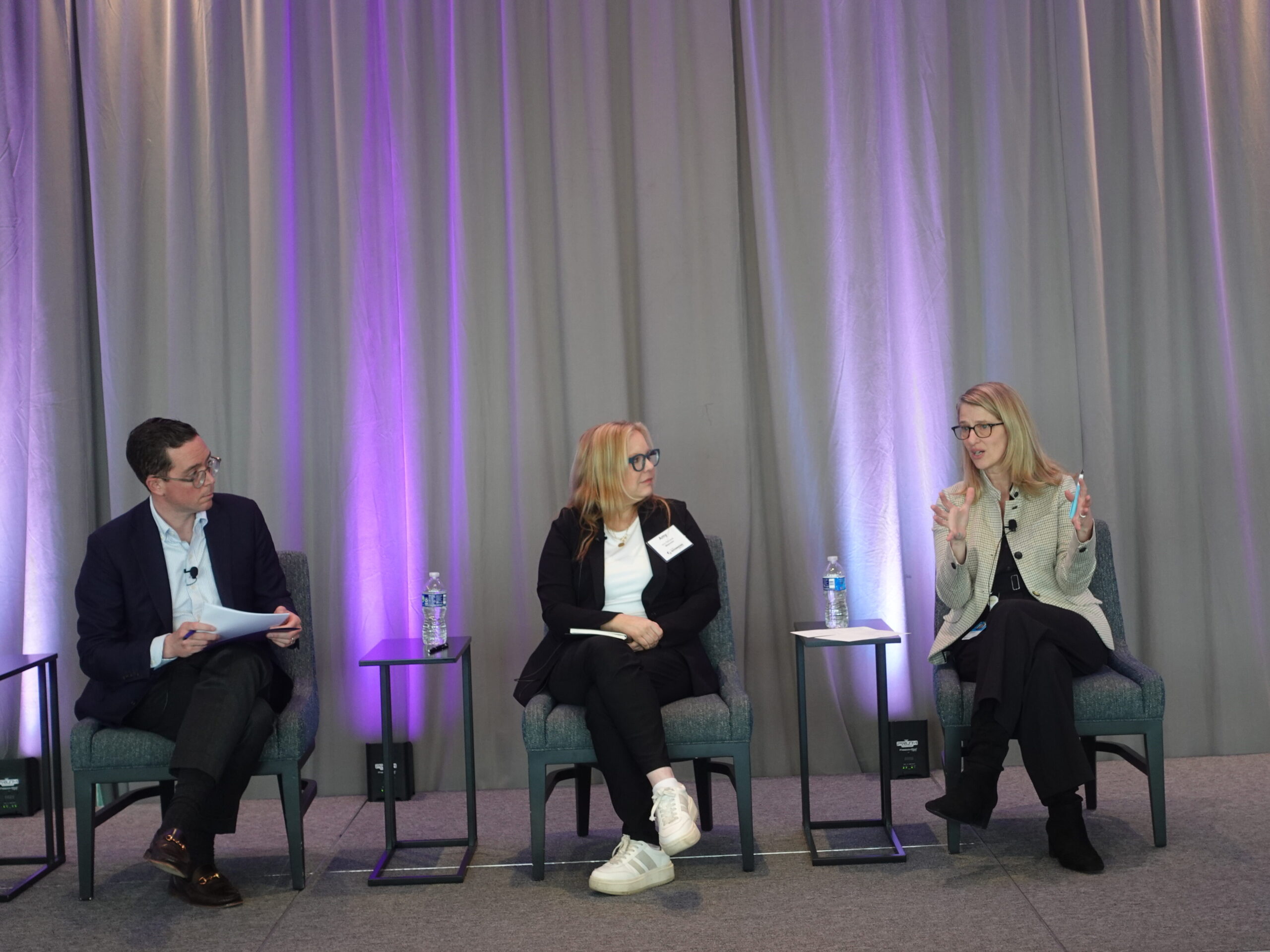
- Ensuring teachers have the tools and upskilling needed to pass on to the youth
- Defining “AI Literacy” across the states
- Embracing AI for its benefits while prioritizing critical thinking skills
- Incentivizing employers to provide AI literacy training
- Implementing the “worker voice” into policy decisions
- Encouraging private-sector collaboration around best practices
Strengthening Military and Civilian Career Paths for Veterans and Military Families
Ensuring that veterans and military families have opportunities for economic mobility is a top priority for Governors. This session looked at best practices and policies for strengthening military and civilian career paths for veterans and military families through education, training, and supportive services. The discussion featured Michelle Blakeslee, Policy Analyst, NGA Center for Best Practices, who moderated a discussion with Eric Eversole, President, Hiring Our Heroes and Vice President, U.S. Chamber of Commerce; Trae Rahill, Chief Executive Officer, Oklahoma Employment Security Commission; and Secretary Anthony Woods, Maryland Department of Veterans and Military Families.
Leading off the discussion, Secretary Woods quoted a mantra of Maryland Governor Wes Moore, “service will save us”, and highlighted the importance of leading with action rather than words to thank veterans, while also incentivizing them to remain in-state and contribute to the workforce once their time in the military comes to an end. He went on to discuss work taking place in Maryland to ensure that service members leaving the military have successful transitions into civilian life and a clear pathway for career and economic mobility.
Trae Rahill gave an overview of how Oklahoma’s large military presence impacts the state’s economy – accounting for 60,000 jobs statewide and $50 billion towards the state economy annually. He emphasized the importance of providing individualized services to military members leaving service rather than a one-size fits all approach where veterans and their families can fall through the cracks.
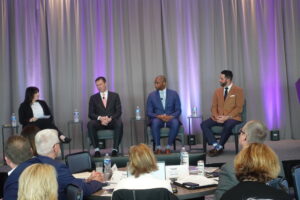
Eric Eversole spoke about the unemployment challenges veterans and their families often face after leaving service. He noted that 60% of military members leaving service will make less in their first civilian job than they did while serving in the military, 61% will be underemployed after three years of leaving service, and veterans are half as likely to get promoted to a VP or Director role as their civilian counterparts. He pointed to the current structure of transition processes across military branches, how resources are allocated, and difficulties with translating military experience to civilian roles as contributing to veterans’ employment challenges. He also outlined some of the ways Hiring Our Heroes is working to meet these challenges, including connecting military members to employers while they are still in service.
Key points from the discussion included:
- Providing training and resources for service members before they leave service
- Integrating military families into a new state
- Prioritizing the unique challenges of military spouses and families
The second day of the Institute concluded with a discussion on priorities during the new Congress. The discussion featured Jake Easter, Education Policy Advisor, Senate Committee on Health, Education, Labor and Pensions and Rebecca Howard, Senior Education and Workforce Policy Advisor, Office of Senator Tim Kaine in a conversation moderated by Tim Carlton, Legislative Director, NGA Office of Government Relations.
“We want Wisconsin workers to be ready for the 21st Century. For the second consecutive year, we hit an all-time high of nearly 10,000 Youth Apprentices and had record-high employer participation. And we had the highest enrollment ever in our Registered Apprenticeship Program’s 100-year history—for the third year in a row. We launched the first-ever teacher apprentice pilot program to retain new teachers and bolster our education workforce. We created new youth apprenticeship pathways from law enforcement and fire prevention to early childhood education.”
Governor Tony Evers – 2025 State of the State Address
Friday, March 14
The meeting of the National Association of State Workforce Board Chairs opened with each state and territory sharing recent successes and challenges, followed by a moderated discussion on common topics raised. The group then voted on a location for the 2025 Summer Workforce Development Policy Institute, stay tuned.
Metrics that Matter
Sophia Yager, Senior Policy Analyst, NGA Center for Best Practices, then moderated a discussion with Jess Kostelnik, Senior Policy Advisor, Office of Colorado Governor Jared Polis and Mike Rogers, Chief Workforce Officer, Office of Arkansas Governor Sarah Huckabee Sanders exploring metrics that meaningfully assess state workforce system performance, as well as strategies for effectively collecting and displaying data for a wide range of stakeholders.
Jess Kostelnik highlighted the importance of evidence-based decision-making in Colorado, including outcomes-based evaluations of program investments. She explained Governor Polis’ approach to performance management, using “wildly important goals” and “wildly important priorities” to set measurable, time-bound goals for state agencies. She detailed the three categories of metrics used in Colorado: input measures (demographics, enrollment numbers), output measures (program completion, employment), and outcome measures (economic mobility, industry persistence). Kostelnik emphasized the need for long-term impact metrics to measure the true value of government services—a key part, she explained, of Governor Polis’ NGA Chair’s Let’s Get Ready initiative.
In his opening remarks Mike Rogers outlined Governor Huckabee Sanders’ Arkansas Workforce Strategy, which aims to standardize, simplify, and streamline workforce services. He emphasized the importance of data integrity and having “a single version of the truth” to drive performance and automation. One of the challenges of this effort, Rogers explained, was the difficulties inherent with integrating complex systems, which they tried to ameliorate by taking a holistic view of each Arkansan’s journey. Rogers also discussed the potential of using AI and machine learning to create personalized career pathways and improve service delivery.
Key points from the discussion included:
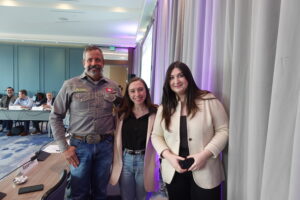
- The importance of measuring the efficiency and responsiveness of the state’s workforce system.
- The role of state workforce boards in promoting data-driven decision making and the importance of cross-agency metrics—which involves collaboration between agency divisions.
- The problem with using different yardsticks for measuring talent development outcomes and the need for standard definitions and requirements.
- The benefits and drawbacks of using labor force participation rate as a systemic indicator of economic health.
- The challenges of obtaining real-time data and the need for dynamic data warehousing to support real-time analysis and decision making.
- The need for more comprehensive metrics that capture the value of credentials, including tracking credential attainment and validating competencies.
Reaching and Serving Rural Communities
Following a short break Tim Berry, Chair, Tennessee State Workforce Development Board; Director of Organizational Effectiveness and HR Analytics, Herschend Enterprises; Nancy Foster, Vice President for Quality and Patient Safety Policy, American Hospital Association; and Andrew Warrington, Chair, Illinois Workforce Innovation Board; CEO, UCC Environmental looked at challenges and opportunities in serving rural workers, students, and businesses through the workforce development system, including innovative strategies for service delivery and barrier removal, in a panel moderated by David Harwood, Chair, KANSASWORKS State Board; Senior Vice President, Terracon.
Tim Berry spoke about transportation challenges in Tennessee, particularly for rural job seekers and youth employment programs. Berry also highlighted the success of the Tennessee Reconnect and Drive to 55 programs in providing education and upskilling opportunities for rural residents. Andrew Warrington, provided data-driven insights on labor force factors and industry demands in Illinois, noting the need for 500,000 new jobs by 2030. Warrington discussed discusses the limitations of WIOA funding and the need for additional funds for wraparound services and Governor Pritzker’s executive order to engage workforce development organizations and employers in their communities to “be where employers and employees are, including rural communities.” Nancy Foster spoke on the issue of healthcare deserts, and the challenges in recruiting and retaining healthcare workers in rural areas. Foster talked about engaging high school and middle school students about healthcare careers and the importance of promoting training rotations in rural communities.
Key points on attracting and retaining workers in rural areas included:
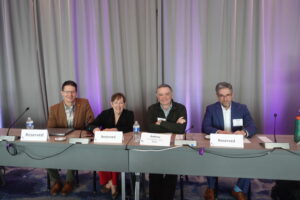
- The importance of community welcome and the need for entertainment options.
- The importance of providing opportunities for both partners in a family to participate in the workforce.
- The importance of wraparound services, including transportation, housing, and childcare.
- The importance of local workforce areas and the need for employer engagement, especially for small businesses.
- Providing grants for rural students to get certifications and incentives for them to remain or return to rural communities.
Before closing remarks attendees were treated to a sneak peek at an upcoming NGA whitepaper on Exploring Workforce System Governance and Innovation, developed in partnership with the Harvard Project on Workforce. Bookmark the NGA Workforce Development & Economic Policy program page to keep an eye out for its release, and to stay up to date on Governors’ workforce development efforts.
Most of you have heard me talk about my experiences in rural Tennessee meeting kids who have a unique ability to connect their brain to their hands, making them gifted in skilled trades. Together, we have worked hard to connect these young Tennesseans to the workforce by clearing TCAT waiting lists and expanding vocational, technical, and agricultural education in all 95 counties. Still, financial barriers exist…So tonight, I am proposing the Tennessee Works Scholarship – a new award that will cover every penny of TCAT tuition and fees for all students, and will finally relieve the extra cost burden of tools and equipment for those most in-need.
Governor Bill Lee – 2025 State of the State Address






